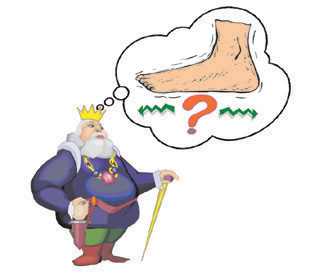

| | The Origin of Shoe Measurement |
|
| If we go to a shoe store and tell the salesperson that we are looking for a certain size, they know exactly what we mean. No matter which brand name is on the shoes, a size five is always a size five and a size six is always a size six. Have you ever wondered how standard lengths all got started? Well, in 1324, under King Edward II of England, a standardized measurement for distance was decreed. Using the perfection of God's barleycorn which was a constant and available unit for all to use, three barleycorns were laid end to end, which equalled one inch. The largest human foot at the time was the equivalent of 13 inches or 39 barleycorns. Therefore rulers originally equalled 13 inches. Sometime over the next 200 years that extra inch disappeared and one foot became 12 inches. Inuit women were not the only ones who started using their hands as a way to measure for making boots. The other standard of measurement in England was the hand (which is still used to measure horses). A hand equals 4 1/3 inches or 13 barley corns. When a standardized measurement for shoe sizing began in the seventeenth century, children's sizes were deemed to be less than the measurement of a hand and adult sizes were those over a hand. Adult sizes began with the deduction of 4 1/3 inches, so an adult woman's size four shoe means that the woman actually has an 8 1/3 inch long foot. The English system was transplanted to the US but altered slightly, starting at an even 4 inches. Information
source: Sarah Beam of the Bata Shoe Museum. |
